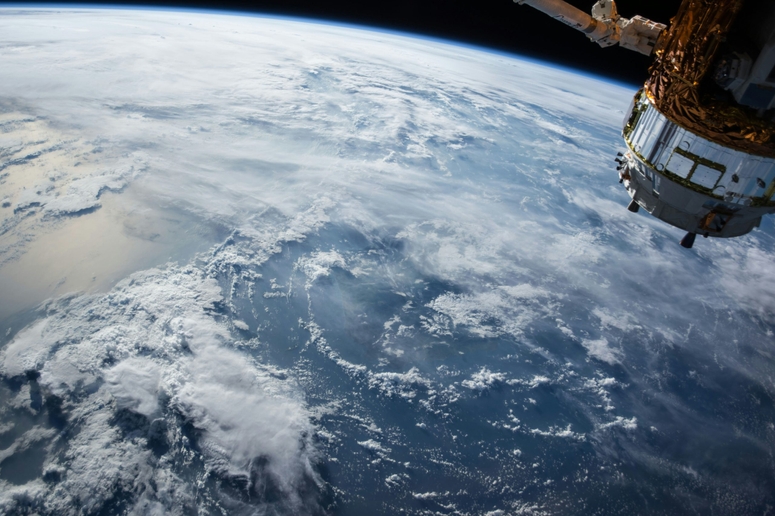Measuring bee pollination with audio sensors and satellites
Innovate UK fund AgriSound and Wyld Networks to monitor pollinators in English Fruit orchards

On a sunny day in mid-April, apple trees in Kent orchards had awoken from winter dormancy and were rapidly approaching full bloom. Delicate pink flowers adorned the branches ready to disburse and receive pollen to create the fruits. However, the orchards were too still and silent – few insect visitors were making the journey to the trees to fulfil their role in this vital process.
This was the situation observed by Dr Heather Sanders, lead scientist at AgriSound, while conducting pollinator counts and observations at study sites across Kent. Findings echoed by growers and agronomists in the region – “this year has been really poor for pollinators” says Nigel Jenner, agronomist at Avalon Fresh “our growers have all said they have seen far fewer bees around the crop than normally expected and we anticipate that our yields will be low this year as a result.”
Is this the culmination of a burgeoning problem identified and predicted by scientists? In 2022 Wyver et al. published a paper highlighting the potential for increasing temporal mismatch between apple trees and bee emergence and the resultant negative impacts on fruit yields. Other papers have suggested that food shortages could have long term negative impacts on pollinators – with impacts visible in subsequent generations. Certainly, some low temperature spells, little sunshine and heavy rainfall in March and April (as reported by the Met Office) have created various challenges for farmers. In particular, temperatures were below average for some days in mid-April at the time where we were observing trees in bloom but little pollinator activity.
The status of pollinators in the UK and globally is increasingly a topic of concern given our reliance on pollinators for maintenance of our food supply. Action is needed to stop and reverse pollinator decline. However, it is often still unclear exactly how we should be doing this and we do not fully understand the impact of our actions and interventions on pollinator populations – without understanding we cannot take appropriate action.
The first step to supporting and augmenting pollinators as a vital natural resource is to monitor insect biodiversity. For this reason, AgriSound has teamed up with Wyld Networks to create an insect monitoring solution to gather insect activity data from a wide range of geographies, including some of the most remote and challenging environments.
AgriSound automated bee monitoring solution continuously quantifies bee activity giving an in-depth long-term understanding of pollination trends. Wyld Networks satellite capability enables connectivity for IoT devices in remote locations where previous automatic data reporting would be impossible.
Now, Innovate UK funding is enabling these two innovative companies to join forces to create a satellite enabled insect monitoring device with additional capacity taking detection beyond bees.
AgriSound’s audio sensing devices can both identify pollinator species and count their frequency in a given location. This monitoring of the pollinator environment delivers accurate and continuously collected data. By embedding Wyld’s sensor to satellite LoRaWAN connectivity solutions into the AgriSound device it becomes possible to automatically collect data and deliver this date to be analysed in the AgriSound software.
Wyld Networks connectivity solutions work with Low Earth Orbiting (LEO) satellites that travel at 25,000km/h at a height of 500-600kms. Each shoe-boxed sized satellite will pass overhead anywhere on the Earth’s surface once per day. Multiple satellites offer additional opportunities to send data. This means that even in the remotest locations where there is currently no cellular coverage, Wyld can still deliver data, without the need to visit sites or install expensive telecoms infrastructure. In fact, LoRaWAN is so energy efficient that the equivalent of 2 x AA batteries can last several years sending multiple messages per day.
The Innovate UK funding is enabling the integration of monitoring and connectivity. As data quantities are restricted when it comes to LEO satellites, AgriSound are developing algorithms and sound libraries to reduce data package size which Wyld will unpack in their cloud-based network management tool called Wyld Fusion.
So, this combination of low power, low-cost data connectivity will result in English fruit orchard owners being able to access the critical data they need to make sure they both understand and can react to changes in pollinator densities and activity at different times of the growing cycle. However, this technology has countless potential applications across the world with different crop types, climates and locations.
This project is underpinned by a belief that measurement is the key to improvement for the world of pollination.

